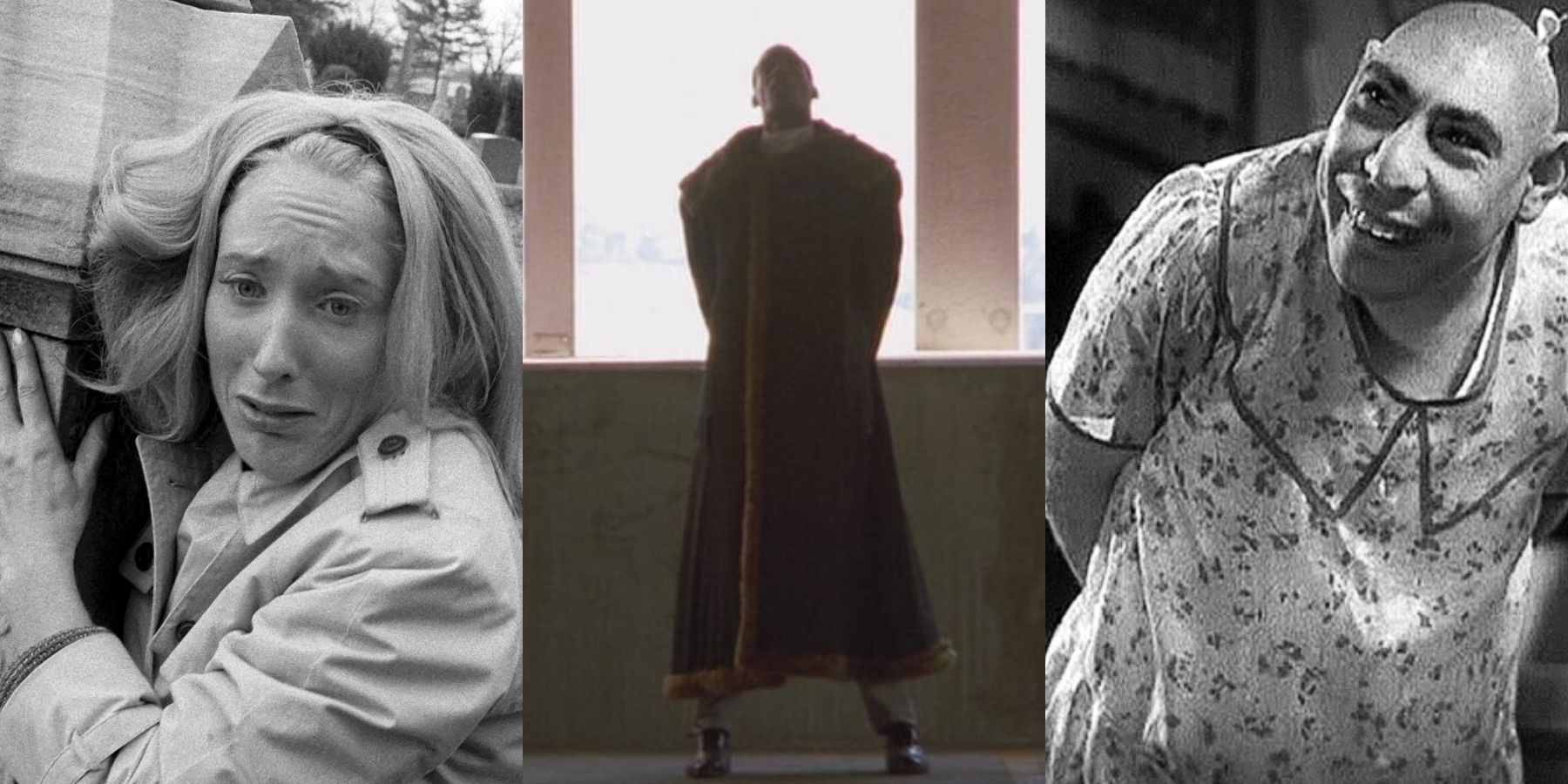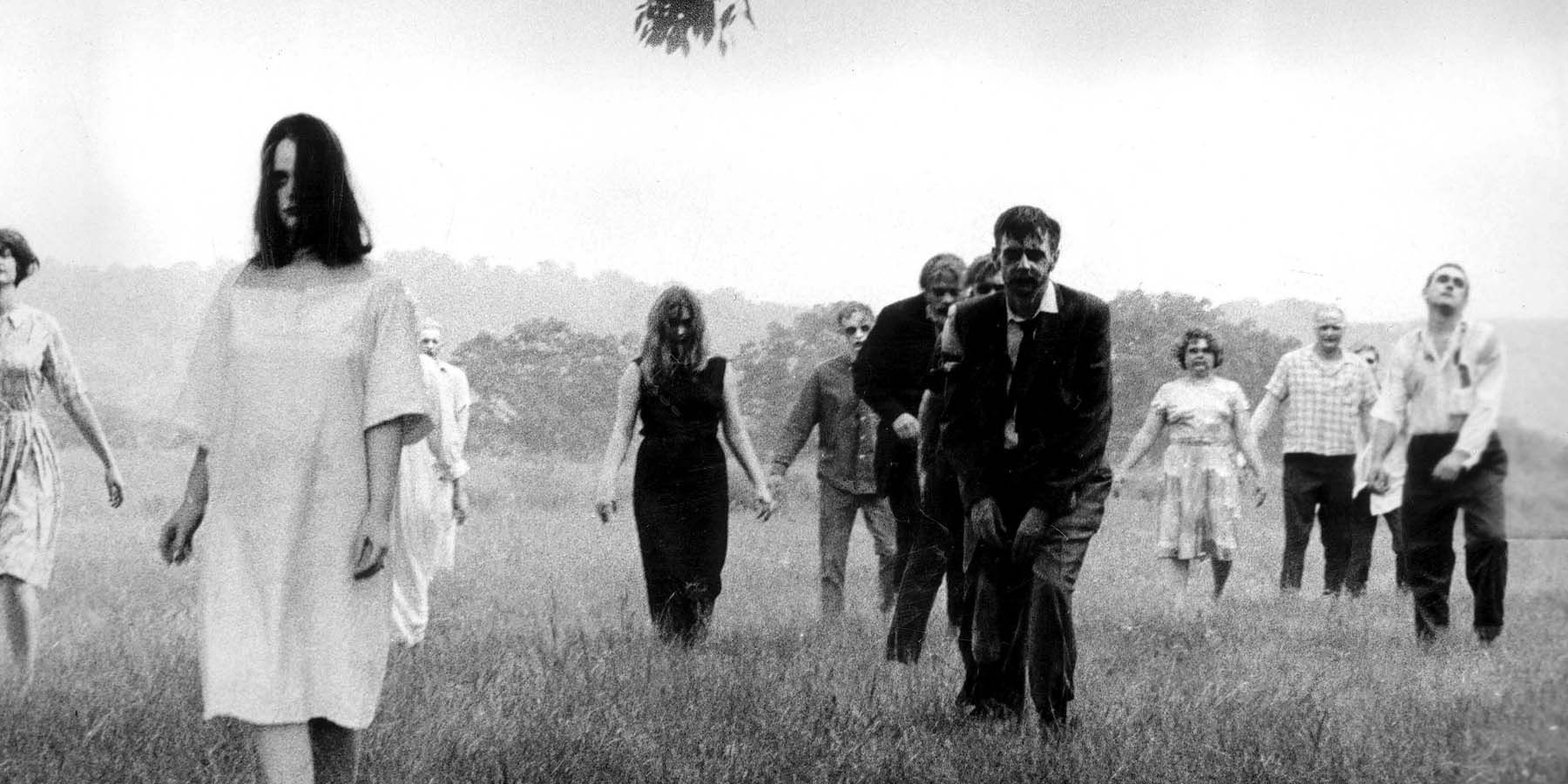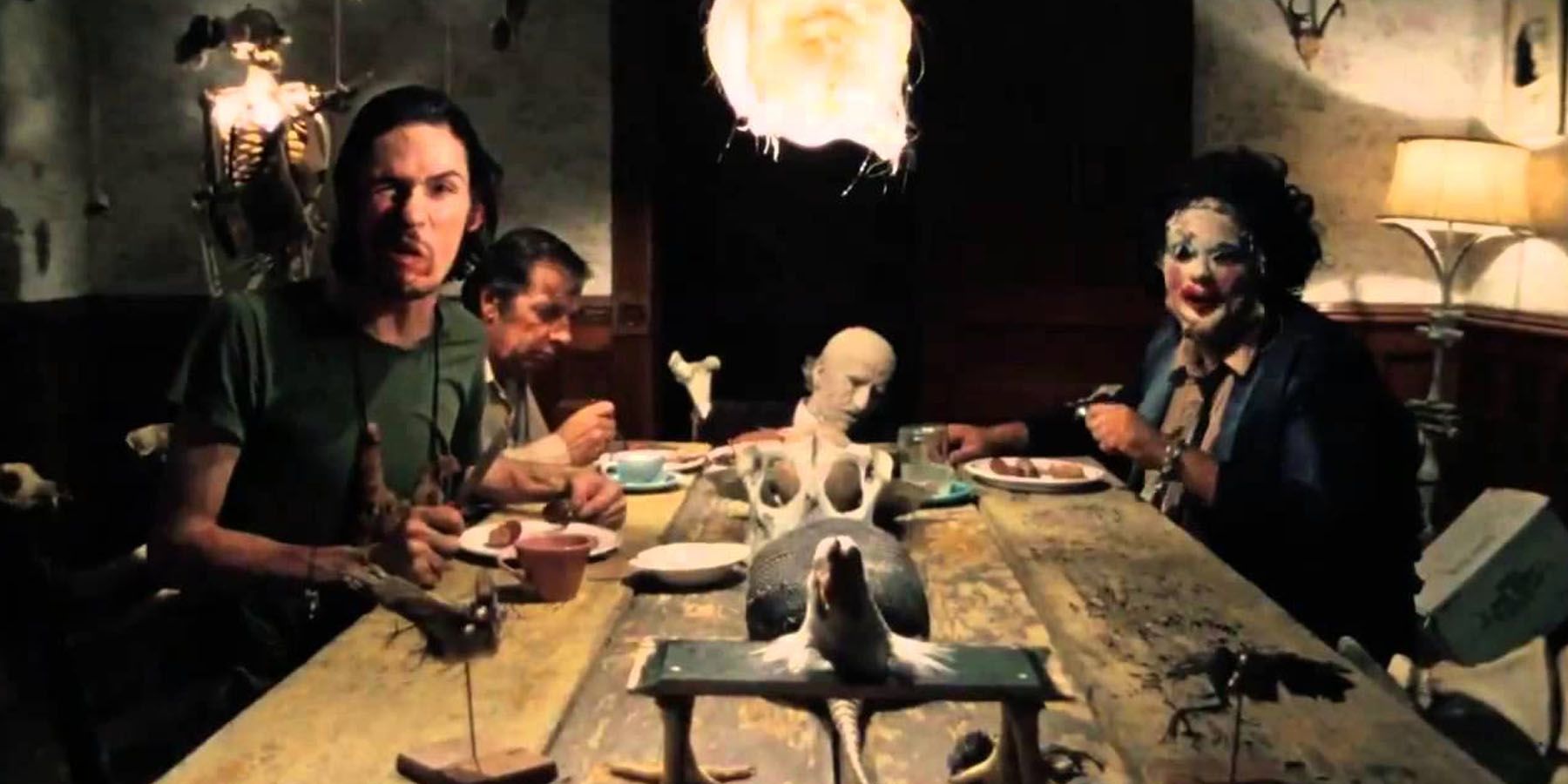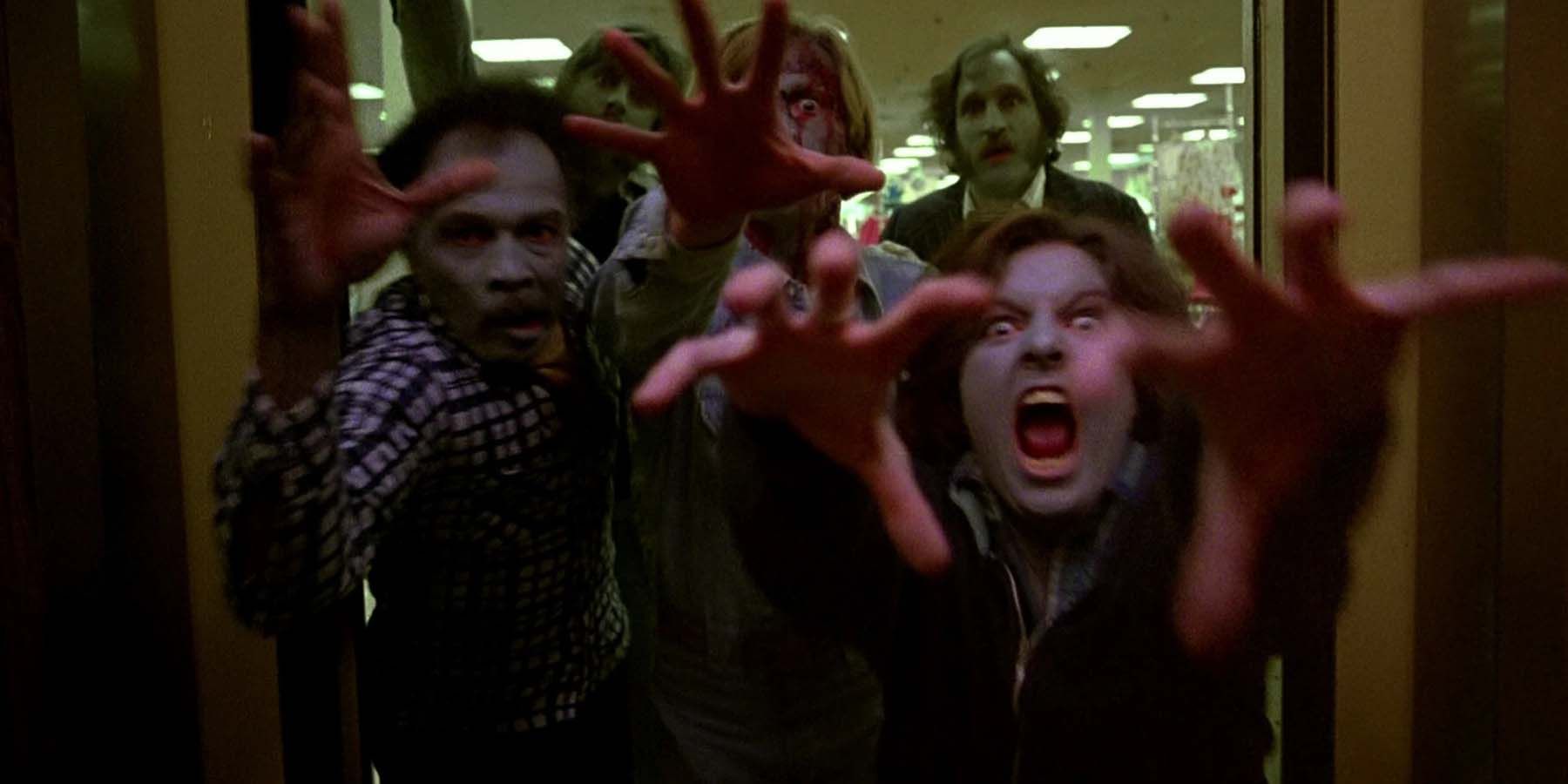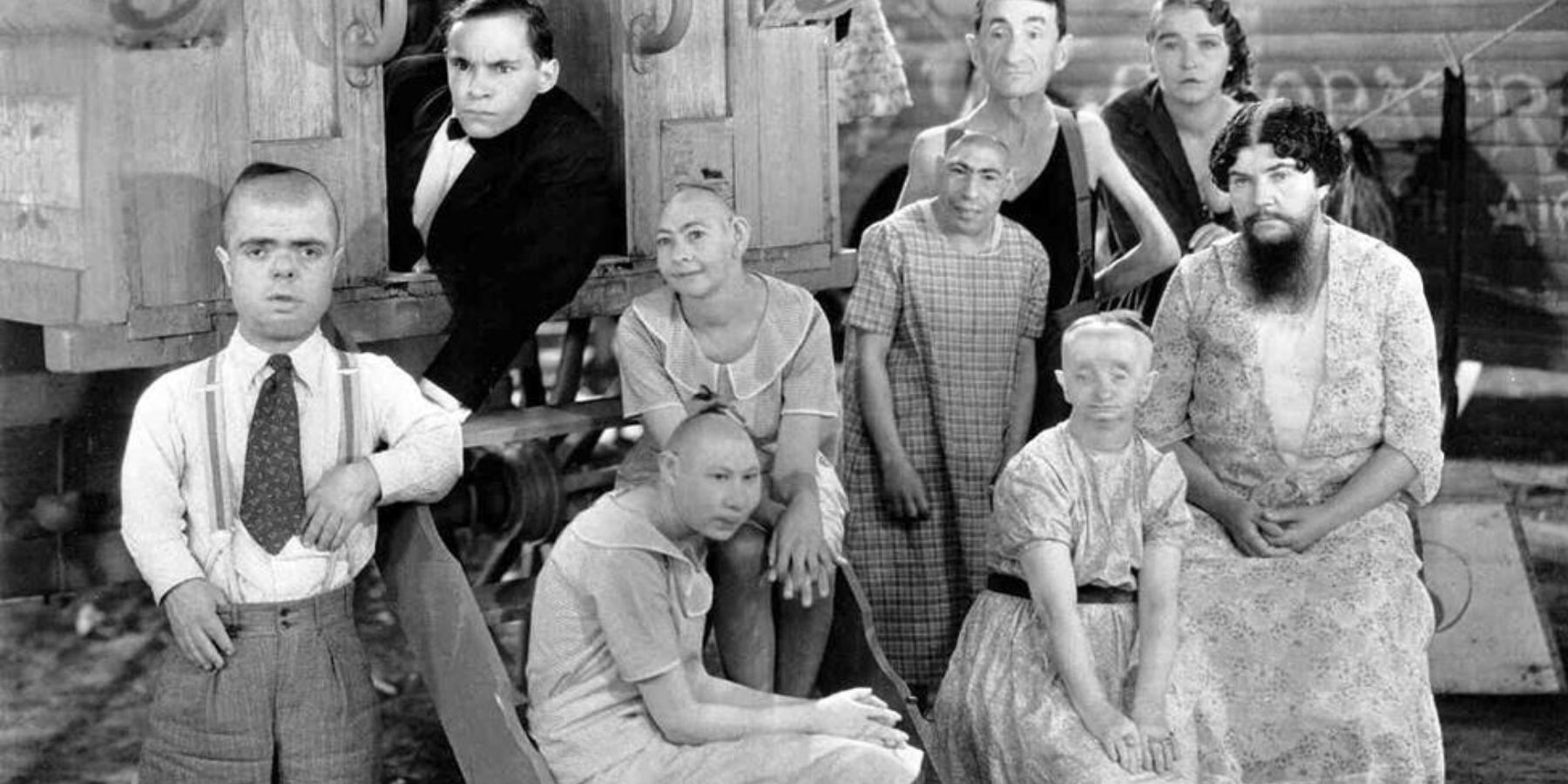"Woke horror" is commonly thought of as a 2010s-2020s horror trend. It refers to horror films that are deeper than they appear, and use horror as a way to convey a sociopolitical message. While these films, such as Get Out, The Invisible Man, and The Hunt, tend to be well-liked and popular, it's also a genre that's often criticized and made fun of for being "too Gen-Z".
The thing is, horror has always been woke. Filmmakers have been using the genre to convey criticisms of society and politics since the very beginning. From important anti-racist messages to commentary on American consumerism, there are examples of "woke horror" found in all decades.
Night of the Living Dead (1968)
George A. Romero made huge waves in 1968 with his zombie flick Night of the Living Dead. It's largely thought of as one of the most influential horror movies ever for a few reasons. One is that it's credited for popularizing the zombie genre in media, and another is its seemingly anti-racist sociopolitical undertones.
Looking at the historical events to take place in 1968, it was a huge year for the American Civil Rights Movement. Early in the year, Martin Luther King Jr. was assassinated and soon after, the Civil Rights Act was passed. This same year, Night of the Living Dead was released with Duane Jones, a Black man, in the leading role. While it was uncommon to have a Black leading man at the time, that wasn't necessarily political on its own. The themes, however, definitely were.
In the film, Jones's character Ben is the only Black person in the cast and is the leader of a group who is hiding out from hordes of zombies. Throughout the film, some characters express distrust and even fear towards him despite his multiple heroic actions, and while his race is never explicitly mentioned it's not hard to detect the racism in these people. The real statement though is at the end of the film, when it looks as though he'll be the sole survivor of the group, only for him to be unfairly killed by fellow humans who think he is a dangerous zombie. This is such a pointed moment and is extremely shocking. The political undertones are so stark and still relevant today.
The Texas Chain Saw Massacre (1974)
The Texas Chain Saw Massacre is another film known for breaking barriers. Predating Halloween by a few years and Black Christmas by mere months, Tobe Hooper's 1974 classic is one of horror's first true slashers, complete with tropes that fans know and love. It also is rife with social commentary, though what it exactly is about is debated.
Many would say that the commentary here is about America's fascination with violence, which is interesting given the subtlety of the violence in the actual film. Others have cited it as a commentary on the meat industry. The family of villains in the film are cannibals, and meat is a very strong theme throughout. It's rumored that this is the interpretation Hooper intended all along and the power of the film was said to even affect well-known fantasy director Guillermo del Toro, turning him vegetarian for years after seeing the film.
Candyman (1992)
Based on a Clive Barker short story called "The Forbidden", Bernard Rose's 1992 dark love story takes the original themes and bumps them up. While the original works are a commentary on the British class system and gentrification, Rose added elements of systemic racism to the lore.
Because the film version of the story is set in America, this makes sense. Set in the Cabrini-Green projects of Chicago, Candyman's titular villain is the vengeful spirit of a wrongfully (and brutally) murdered 1800s Black man. Ultimately, while terrifying, he's a very sympathetic character and many believe he is somewhat of an anti-hero. This is even more expanded upon in the 2021 sequel.
As the movie unravels, the themes are more and more relevant. The villain really represents systemic racism and generational curses. The city and the community are shown off in many ways, with the majority Black community of Cabrini-Green really shining. It's a stark and interesting film that, while now a little dated in some elements, tackled some issues that are extremely relevant to this day.
Dawn of the Dead (1978)
Yes, another classic George A. Romero zombie flick happens to have some fantastic cultural commentary. While technically a sequel to the original Night of the Living Dead film, this one contains none of the same characters and tackles a totally different theme.
Dawn of the Dead is largely seen as a criticism of American capitalism and overconsumption, and these themes are not subtle at all. In the film, a group of zombie apocalypse survivors hides in a shopping mall. Of course, hordes of zombies start flocking to the mall, looking for food. This is a relatively clear metaphor for Americans and the capitalistic culture that is so ingrained in society, causing the public to blindly shop and spend money in times of crisis.
Freaks (1932)
Freaks is a film that many will have missed because of its age, but it's really a classic horror necessity. Known for a few really famous scenes, and for its cast of people with real disabilities portraying the "circus freaks." Though originally labeled as disgusting and grotesque, public opinion has since changed.
Now, Freaks is generally seen as a commentary on class warfare in society. Because of its inclusion of disabled characters, it's also been widely studied for its portrayal of these people. Many have come to the conclusion that, rather than being exploitative or mocking, Freaks portrays these characters in a very sympathetic light. Some even say that there is an anti-eugenics message present, which would have been relatively groundbreaking for the times.

